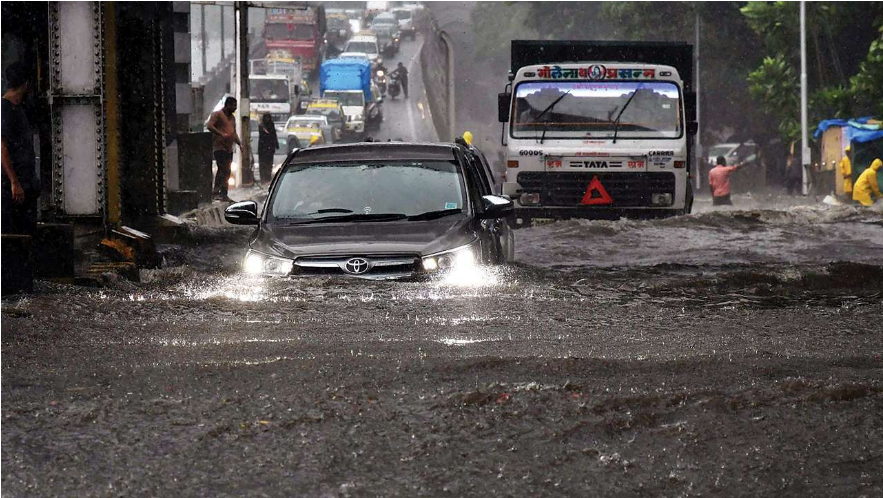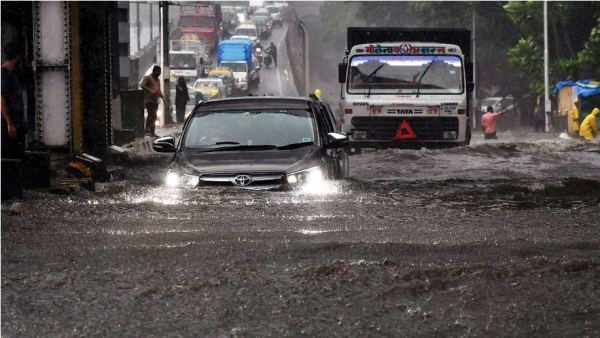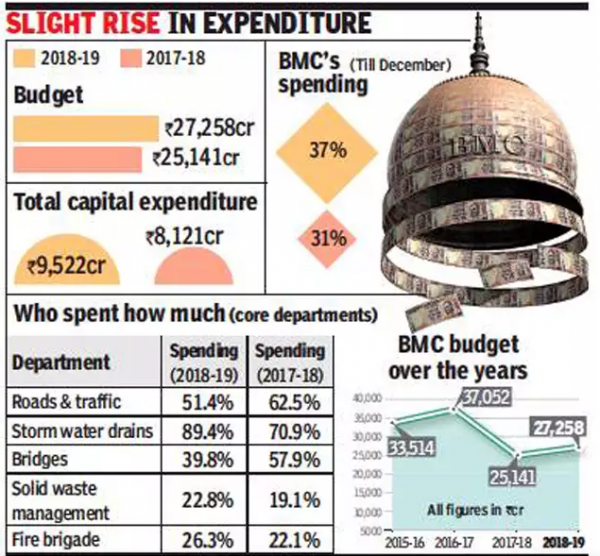All About Noval Coronovirus (Covid-19) and His Symptoms
- 23-04-2020
- News

On Wednesday, August 5, Mumbai, commercial capital of the country, received highest rainfall of season within just 12 hours. India Meteorological Department (IMD) officials said that Colaba weather observatory recorded its highest single-day rainfall in August in 47 years since at least 1974.
Following the heavy rains, Mumbai police and State Cabinet Minister Aditya Thackeray requested people to stay indoors and not venture out unless it is extremely essential. Maharashtra Chief Minister Uddhav Thackeray took stock of the situation on Thursday and asked the civic body -- Brihanmumbai Municipal Corporation (BMC) to remain alert and coordinate with the police and railway authorities, urging health machinery and the National Disaster Response Force (NDRF) to ensure that people do not face any hardships.
"Prime Minister Narendra Modi spoke to Maharashtra CM Shri Uddhav Thackeray regarding the situation prevailing in Mumbai and surrounding areas due to heavy rainfall," the PMO tweeted.
Persistent torrential rainfall caused severe waterlogging on streets & highways in several areas of the city leading to traffic diversions, disrupting rail and bus services, creating a possibility of floods in the city and suburbs. Stormy winds uprooted trees, damaged rooftops of buildings, collapsed sign boards. The BMC has opened temporary shelters for stranded passengers and others at its schools. Bombay High Court had to suspend all the proceedings for the day due to persistent rains.
The rain intensity reduced in Mumbai and surrounding areas on Thursday enabling gradual resumption of transport services, IMD has predicted light to moderate rainfall over the weekend.

[Image Source: DNA India/ File Photo]
Regular Phenomenon
Disruptions due to rains wreaking havoc in the city is now a regular occurrence during monsoons making Mumbaikars resilient with stories of courage and mutual support floating around every season. Infrastructural damage, interrupted railway and bus transportation, viral and water-borne diseases in waterlogged areas hits the pocket of government hard every year with losses running in crores.
Government and some scientists links the extreme rainfall in Mumbai to global warming that is increasing ocean temperature causing pole-ward shift of the low-level Jetstream which impacts the Indian monsoon. But environmental experts believe that this natural phenomenon is not the only culprit.
Government Failure
CAG report in 2019 slammed civic agencies for incomplete works on flood preparedness. Inquiries conducted after every major tragedy blames corruption, inefficient urban planning and lack of governance as the primary factors.

[Image Source: Times of India]
Urban planner and executive director of Urban Design Research Institute (UDRI), Pankaj Joshi recently pointed out that “BMC’s BRIMSTOWAD (Brihanmumbai Storm Water Drain System) project has been going on for 13 years. It comprised 58 works, including rehabilitation and augmentation of underground drains, widening and deepening of nullahs and construction of pumping stations. After spending Rs 1,200 crore so far, the civic body has only completed 38 works.”
Even when the budget portion spent on projects is justified by claiming that the work is complete, the actual story is often the other way round. For instance, BMC Commissioner Iqbal Singh Chahal claimed in July 2020 that the city is all prepped for rains with over 2900-km long storm water drain network de-silted and cleaned up. However opposition leader Ravi Raja alleged that only 40% of drains have been de-silted.
The civic body is also accused for squandering the budget on futile projects instead of concentrating on root cause. As per environmentalist Debi Goenka, “Given the fact that the natural drainage system of the city has been destroyed, desilting is no solution to prevent flooding, yet there is convenient silence on this subject given the large sums of money involved. Instead of protecting the natural drainage systems and water bodies, money is being spent on pumping rain water into the sea”.
Opposition often demands structural audits of roads, bridges and buildings in Mumbai attributing Mumbaikar’s woes to ‘corruption’ and stresses the need of investigation by the ‘Anti-Corruption Bureau’.
What is the solution?
As per experts, our cities can be made immune to flood, provided we conserve their fragile environmental resources and resist from insane haphazard urbanization. The civic bodies of Mumbai needs to fix accountability for people’s miseries and work towards scientifically sustainable ecological planning. Such measured could include
The government has failed the people of Mumbai over the years with their plight worsening with every passing monsoon. Corruption, inefficiency and lack of governance cannot be concealed in the deception of climate change. In words of Environmental Journalist Darryl D’Monte, “It is a blot on the face of the country which wants to say ‘Make In India’, when we are unmaking the financial capital”